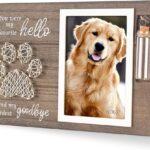
I. Introduction to Laser Cutting and CNC for Vintage Restoration
II. Choosing the Right Materials and Techniques for Restoration
III. Step-by-Step Guide to Restoring Vintage Items with Laser Cutting and CNC
IV. Tips and Tricks for Achieving Professional Results
Are you a lover of all things vintage? Do you have a passion for restoring old items to their former glory? If so, then laser cutting and CNC are tools that you need to add to your restoration arsenal. In this guide, we will explore how these technologies can be used to breathe new life into vintage pieces and give them a modern twist.
When it comes to vintage restoration, precision is key. Laser cutting and CNC (Computer Numerical Control) machines offer unparalleled accuracy and control, allowing you to recreate intricate details with ease. Whether you are working on a vintage clock, a classic car, or a cherished piece of furniture, these tools can help you achieve professional results.
Imagine being able to replicate missing parts, engrave intricate designs, or cut out complex shapes with the push of a button. Laser cutting and CNC machines make it possible to tackle even the most challenging restoration projects with confidence and precision. The possibilities are endless when it comes to incorporating these technologies into your restoration work.
Not only do laser cutting and CNC machines offer precision, but they also provide versatility. With a wide range of materials that can be used, including wood, metal, plastic, and more, you can choose the best option for your specific restoration needs. Whether you are looking to create a new piece from scratch or replace a missing part, these tools can handle a variety of materials with ease.
So, whether you are a seasoned vintage restoration expert or a newcomer to the world of DIY projects, laser cutting and CNC machines can take your work to the next level. With the right tools and techniques, you can bring new life to old items and create pieces that are both functional and beautiful.
Join us on this journey as we explore how to choose the right materials and techniques for restoration, provide a step-by-step guide to restoring vintage items with laser cutting and CNC, and share tips and tricks for achieving professional results. Get ready to unleash your creativity and transform vintage treasures into modern masterpieces!
Choosing the Right Materials and Techniques for Restoration
When it comes to restoring vintage items using laser cutting and CNC techniques, selecting the right materials is crucial for achieving the best results. Here are some tips to help you choose the appropriate materials and techniques for your restoration project:
- Research and Planning: Before starting your restoration project, it’s essential to research the original materials used in the vintage item. This will help you determine which materials to use for the restoration process. Additionally, planning out the steps of your restoration project can help you decide on the best techniques to use.
- Quality of Materials: When choosing materials for restoration, opt for high-quality options that closely match the original materials. This will ensure that your restored item looks authentic and has a professional finish.
- Durability: Consider the durability of the materials you choose for restoration. Select materials that will withstand the test of time and use, ensuring that your restored item remains in good condition for years to come.
- Compatibility with Laser Cutting and CNC: Ensure that the materials you choose are compatible with laser cutting and CNC techniques. Some materials may be more suitable for these processes than others, so it’s important to consider this when making your selections.
- Finishing Techniques: Think about the finishing techniques you plan to use on your restored item. Some materials may require specific finishing techniques to achieve the desired result, so keep this in mind when choosing materials.
By carefully selecting the right materials and techniques for your restoration project, you can achieve professional results that bring your vintage items back to life. Remember to research, plan, and choose high-quality, durable materials that are compatible with laser cutting and CNC processes. With the right materials and techniques, your restoration project is sure to be a success!
Step-by-Step Guide to Restoring Vintage Items with Laser Cutting and CNC
So, you’ve got your hands on a beautiful vintage item that needs a bit of love and attention to bring it back to its former glory. Luckily, with the help of laser cutting and CNC technology, you can restore it with precision and finesse. Here’s a step-by-step guide to help you through the process:
- Assess the Damage: Before diving into the restoration process, take a close look at the vintage item to see what needs to be repaired or replaced. Make a list of the areas that require attention and plan your restoration accordingly.
- Choose the Right Materials: Select high-quality materials that closely match the original ones used in the vintage item. This will help maintain the authenticity and integrity of the piece. Laser cutting can be used to cut materials like wood, acrylic, and leather with precision.
- Design and Prepare: Use design software to create a digital mockup of the vintage item and the replacement parts you need. This will help you visualize the final result and ensure that everything fits perfectly. Prepare your design files for laser cutting and CNC machining.
- Laser Cutting: Send your design files to a laser cutting service provider or set up your own laser cutting machine. Use the laser cutter to precisely cut out the replacement parts from the chosen materials. Make sure to take accurate measurements and use the appropriate settings for optimal results.
- CNC Machining: For more intricate parts or components that require precision milling, use a CNC machine. CNC machining allows you to create complex shapes and designs with accuracy. Follow the instructions for setting up the machine and running the program to mill your parts.
- Assembly and Finishing: Once you have all the replacement parts cut and milled, carefully assemble them onto the vintage item. Use adhesive or fasteners to secure the parts in place. Sand down any rough edges and apply finishes or paints to match the original aesthetic.
- Final Touches: Take a step back and admire your restored vintage item. Make any final adjustments or tweaks to ensure everything is in place. Clean and polish the piece to give it a fresh look and feel.
- Show it Off: Display your restored vintage item proudly in your home or showcase it in your vintage collection. Share your restoration journey with others and inspire them to bring new life to old treasures using laser cutting and CNC technology.
Remember, practice makes perfect, so don’t be discouraged if your first restoration project doesn’t turn out exactly as you envisioned. Keep experimenting and refining your skills to achieve professional results in vintage restoration with laser cutting and CNC.
Tips and Tricks for Achieving Professional Results
Restoring vintage items using laser cutting and CNC technology can be a rewarding and creative process. To ensure that your restoration project turns out as professional and polished as possible, here are some tips and tricks to keep in mind:
- Plan Ahead: Before diving into your restoration project, take the time to plan out the design and materials you will be using. This will help you avoid any costly mistakes and ensure a smooth restoration process.
- Use High-Quality Materials: When restoring vintage items, it’s important to use high-quality materials that will stand the test of time. Opt for materials that are durable and visually appealing to achieve a professional finish.
- Measure Twice, Cut Once: Precision is key when using laser cutting and CNC technology. Make sure to double-check your measurements before cutting to avoid any errors that could ruin your restoration project.
- Experiment with Different Techniques: Don’t be afraid to try out different techniques and approaches to see what works best for your restoration project. Experimenting with new methods can lead to innovative and creative results.
- Pay Attention to Detail: The little details can make a big difference in the overall look and feel of your restoration project. Take the time to pay attention to details like edges, finishes, and alignment to achieve a professional result.
Remember, practice makes perfect when it comes to restoring vintage items with laser cutting and CNC technology. Don’t be discouraged if your first few attempts don’t turn out exactly as planned – keep experimenting and refining your techniques to achieve professional results.










Comments